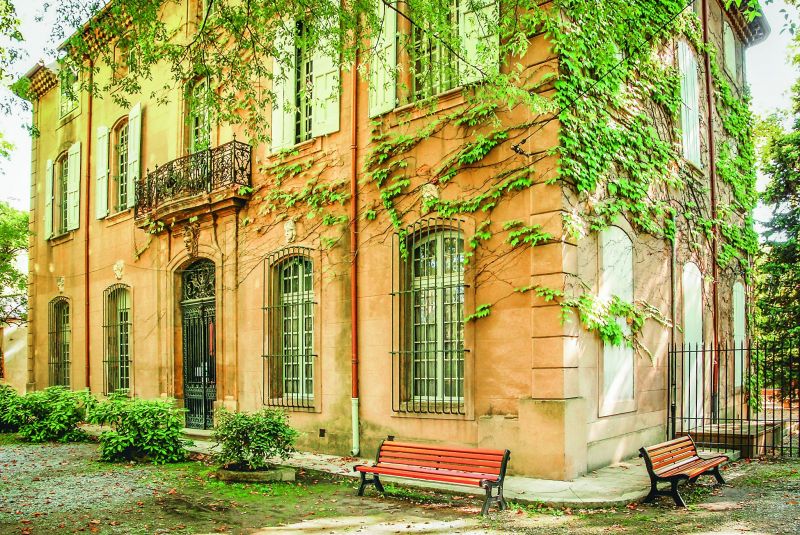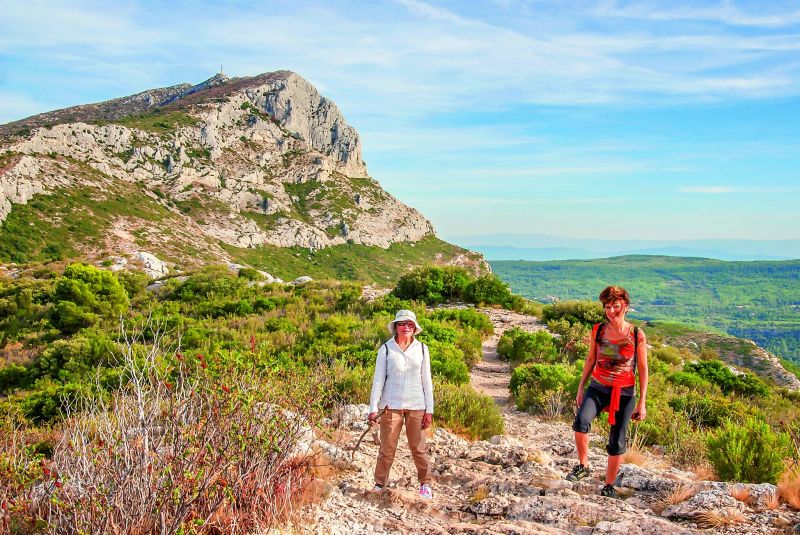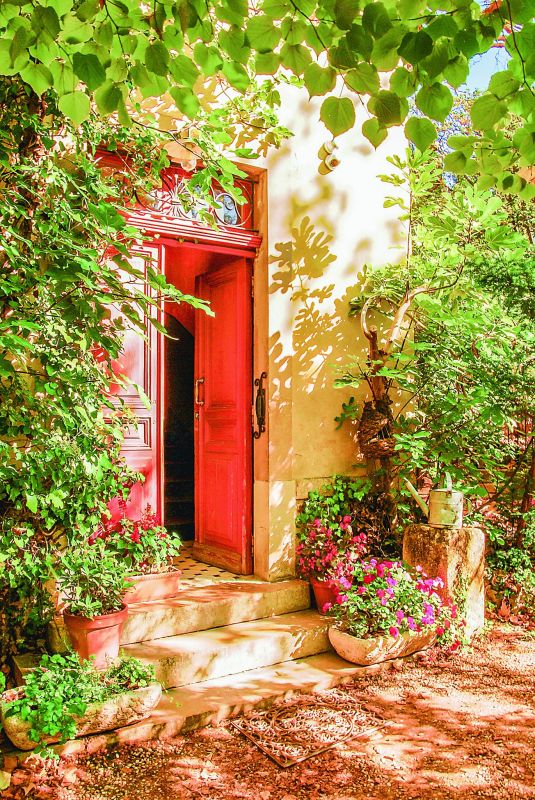Discovering Cezanne

Paul Cezanne dominates the university town of Aix-en-Provence in the South of France. A place that once rejected his work and left notes on his doorstep asking him to leave the town “he was dishonouring.” That was in the mid-1800s when the painter’s search for a new expression that could paint a scene with as many perspectives as the human eye could see, was considered a “celebration of the ugly”. Perspectives have changed today. Visitors to the tiny town beat the tourist path that traces Cezanne’s life, leading from the home he was born and grew up in, to his studio.
Home and Studio
I trace the same path, and wander through the grounds of his family home. The beautiful stone structure is almost like a painting come alive. I can almost sense the artist sitting there painting his home from various angles. The studio that he would call home later in life is still maintained exactly as the artist left it when he succumbed to pneumonia in 1906. A robe, with paint stains ossified on it hangs silent, and the many objects that inspired his still life studies, and were painted repeatedly in many experimental ways, are preserved with pride and love. Cezanne, it is said, anguished over every brush stroke, trying to capture the sense of emotion and life that he saw in his objects; and each of the objects in his studio seem to have stories to tell. Equally fascinating are Cezanne’s self portraits, and the portraits of his other impressionist friends that hang here adding a discernable aura.
 The exterior of Cezanne’s home, right, From 1902 to his death in 1906, Cezanne worked daily in his studio .
The exterior of Cezanne’s home, right, From 1902 to his death in 1906, Cezanne worked daily in his studio .
Painted 100 times over
The studio also has a lovely garden, and one can imagine the artist and the gardener, also one of his frequent subjects, wandering about, picking blooms to arrange and paint. Most impressive, however, is the view. From the wide open window that lets in the famed Provencial light, where colours seem distilled to a rare purity, I can see a mountain. It stands in the far distance, as I try to take a photograph, the attendant tells me that Cezanne had painted it at least a hundred times. He would carry a stool and perch himself close by and spend hours day after day, capturing the mountain’s many moods on canvas. Some of these paintings are now considered priceless.
The mountain seeps into my consciousness too, as mountains seem to always do. And abandoning all other plans, I cajole our guide to accompany me and my photographer colleague. Luckily, she loves climbing too, and so, a change of clothes and shoes later, we are driving up the winding road that leads to Mount Saint Victoire. The mountain from its base is much larger, than what I imagined it to be. Looking at the summit, I find my spirit floundering. It must be a long way up, I surmise. 1000 metres, my guide helpfully offers. There are many trails up the mountain, marked in colours to denote levels of difficulty. With no hesitation, I pick one that is longer but definitely less difficult than the one that goes straight up.
 Sathya Saran on the hike up to Montagne Sainte Victoire.
Sathya Saran on the hike up to Montagne Sainte Victoire.
Picasso’s inspiration
The sights enroute are worth the puffing and panting. Down below are villas, one of which was occupied by Picasso, who, born almost half a century later, took the experiments in cubism that Cezanne had started, to the ultimate level to become unparalleled master in that genre of painting. Also interesting are the myraid spring flowers dotting the hillside. And a vast reservoir that reveals itself; its blue water a balm for my eyes dazzled by the late afternoon sun.

The croissants we have been feasting on seem to have softened me, and I take much longer to climb than expected. Also, I am hoping to avoid any accident that speed may cause on the path that is studded with loose stones. We reach close enough to the top as the sun hits the back of the mountain, and caution kicks in. Knowing well that the way down is always more difficult, we turn back to reach the car before dark. As we drive back, the stars twinkle over the mountain, on an ink blue sky. I wonder if Cezanne painted the scene at night. It could have been his version of Vincent Van Gogh’s Starry Night.
Footnote
Air France connects from Paris to Marseille, the nearest airport to Aix-en-Provence.
The town is famous for its ice creams and desserts.
There is a designated route that tourists can take to pass through landmarks of Cezanne’s life at Aix.
The family house is open at designated times in summer, and a projection of images tells of the painter’s early life in his parental home.
Mount Saint Victoire also offers hang gliding and paragliding facilities.
(Photos: Supriya Kantak)

